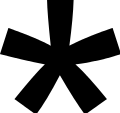< Reconstruction:Proto-Indo-European
Reconstruction:Proto-Indo-European/bʰel-
Proto-Indo-European
Derived terms
► <a href='/wiki/Category:Terms_derived_from_the_PIE_root_*b%CA%B0el-' title='Category:Terms derived from the PIE root *bʰel-'>Terms derived from the PIE root *bʰel-</a>
Derived terms
► <a href='/wiki/Category:Terms_derived_from_the_PIE_root_*b%CA%B0el-' title='Category:Terms derived from the PIE root *bʰel-'>Terms derived from the PIE root *bʰel-</a>
- *bʰleyǵ-
- *bʰḗlH-o- / *bʰl̥-ós
- *bʰolH-o-
- Unsorted formations
Derived terms
► <a href='/wiki/Category:Terms_derived_from_the_PIE_root_*b%CA%B0el-' title='Category:Terms derived from the PIE root *bʰel-'>Terms derived from the PIE root *bʰel-</a>
Reconstruction notes
Pokorny lists *bhel- "henbane" separately but allows the possibility that it is the same as *bhel- "shiny, white."[7] Neither Derksen, nor Kroonen gloss their PIE reconstructions for henbane.
Derived terms
► <a href='/wiki/Category:Terms_derived_from_the_PIE_root_*b%CA%B0el-' title='Category:Terms derived from the PIE root *bʰel-'>Terms derived from the PIE root *bʰel-</a>
References
- Kroonen, Guus (2013), “*bellan-”, in Etymological Dictionary of Proto-Germanic (Leiden Indo-European Etymological Dictionary Series; 11), Leiden, Boston: Brill, page 58
- Karulis, Konstantīns (1992), “bilst”, in Latviešu Etimoloģijas Vārdnīca (in Latvian), Rīga: AVOTS, →ISBN
- Derksen, Rick (2015), “bildėti”, in Etymological Dictionary of the Baltic Inherited Lexicon (Leiden Indo-European Etymological Dictionary Series; 13), Leiden, Boston: Brill, →ISBN, page 90
- Vasmer (Fasmer), Max (Maks) (1964–1973), “болтать”, in Etimologičeskij slovarʹ russkovo jazyka [Etymological Dictionary of the Russian Language] (in Russian), translated from German and supplemented by Trubačóv Oleg, Moscow: Progress
- Derksen, Rick (2008), “*bel(e)nъ, *belena, *bolnъ”, in Etymological Dictionary of the Slavic Inherited Lexicon (Leiden Indo-European Etymological Dictionary Series; 4), Leiden, Boston: Brill, →ISBN, page 40
- Kroonen, Guus (2013), “*bēla-”, in Etymological Dictionary of Proto-Germanic (Leiden Indo-European Etymological Dictionary Series; 11), Leiden, Boston: Brill, page 57
- Pokorny, Julius (1959) Indogermanisches etymologisches Wörterbuch [Indo-European Etymological Dictionary] (in German), volume I, Bern, München: Francke Verlag, page 120
- Kroonen, Guus (2013), “*balþ/d-”, in Etymological Dictionary of Proto-Germanic (Leiden Indo-European Etymological Dictionary Series; 11), Leiden, Boston: Brill, page 50
- Derksen, Rick (2008), “*bel(e)nъ, *belena, *bolnъ”, in Etymological Dictionary of the Slavic Inherited Lexicon (Leiden Indo-European Etymological Dictionary Series; 4), Leiden, Boston: Brill, →ISBN, page 35
This article is issued from
Wiktionary.
The text is licensed under Creative
Commons - Attribution - Sharealike.
Additional terms may apply for the media files.
